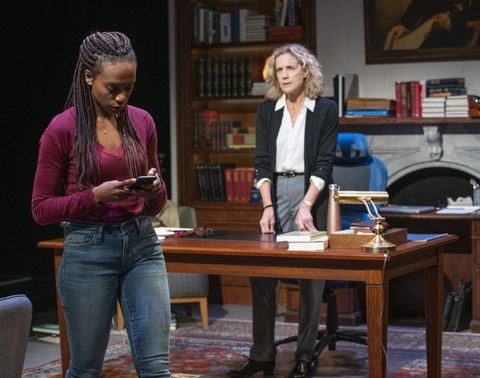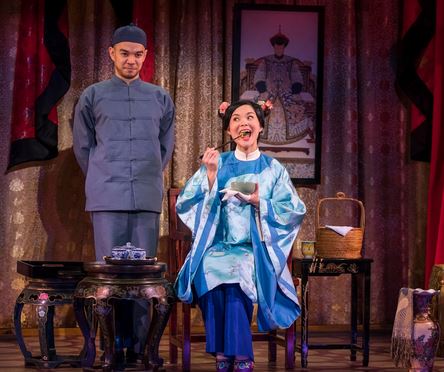This is a reprint of my remarks about ”The Niceties ” at the Milwaukee Repertory Theater presented in their Stiemke Studio theater during the 2019 – 2020 season. This originally appeared on my Facebook timeline October 11, 2019.
The Niceties, in the Milwaukee Rep’s Stiemke Theater, is the most challenging play you are going to see this season. And you will love it. But it’s complicated. And you will be disoriented. Trust Me. Playwright Eleanor Burgess has written a 21st Century drama that confronts contemporary racism in America and delves into how we got here.

The play features exactly two characters, college history Professor Janine Bosko, played by Kate Levy, and history student Zoe Reed, played by Kimber Elayne Sprawl. All of the action occurs in Professor Bosko’s office (and I’ll admit I’ve never seen a campus office quit as nice as this one) on the campus of an elite college. Think Ivy League. Professor Bosko is a white woman and Ms. Reed is a black woman.
Ms. Reed is getting some advice on her American Revolution history paper and everything is going very well when the discussion remains focused on commas, grammar, and spelling. But when the professor questions the Ms. Reed’s thesis and how racism affected the development of the nation after the Revolution, the sparks begin to fly.
I won’t get into the arguments…you really need to experience them for yourselves. But you will agree with some points from both characters. You will certainly disagree with points made by each character. And you will be uncomfortable and some points will hit very close to home. And the play will let you see that. But the play will clearly outline the legacy thinking around the founding of the nation and how new thought and scholarship shows some substantial points missing from our traditional teaching of history.
Kate Levy never for a moment lets you forget that she is a college professor. And Kimber Elayne Sprawl totally inhabits the engaged 19 year old college student, except for just a moment in the second act when Professor Bosco exposes a fact about her personal life and Ms. Reed starts to reassess the situation and their relationship. But only for a moment and then they turn back to their arguments.
Given the roles and story, the major focus is about race in America. But don’t let that be the only issue you see here. There are a number of other, some rather subtle, counterpoints and examples of hierarchies at work. The first is obviously the professor vs. student relationship and who wields the power. And there’s a bit of ageism since the professor is particularly older than her student and she brings that into focus in a fairly inelegant manner. And then there are the questions around class and social rank and elitism and sexuality…and the use of social media as a weapon or defense mechanism (you’ll get to decide).
This is an amazing play that lays out these contemporary social issues and more. I don’t know how Ms. Levy and Ms. Sprawl can maintain the intensity of their roles for the entire play much less the entire run. They do so remarkably well. And are doing it in a set that is essentially a fish bowl since the stage is centered in the Stiemke with seating along both longitudinal sides of the stage.
The Niceties runs through November 3rd and is directed by Annika Boras who did an amazing job putting Ms. Levy and Ms. Sprawl into their roles and facing down the hard edges that this play presents.


